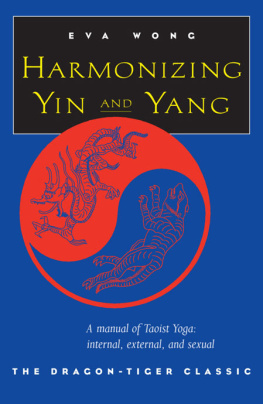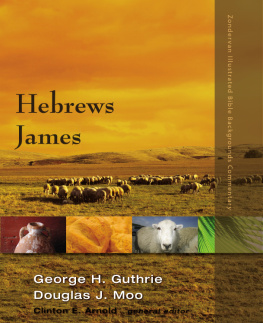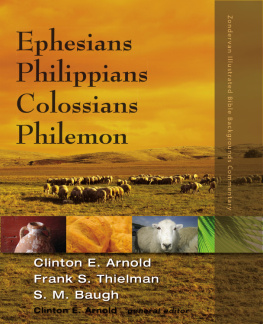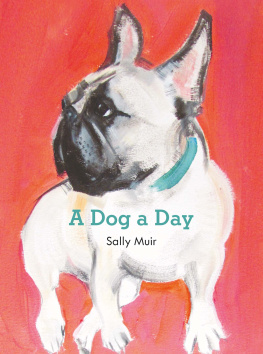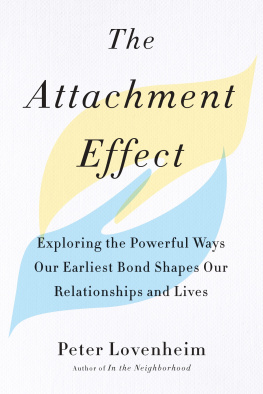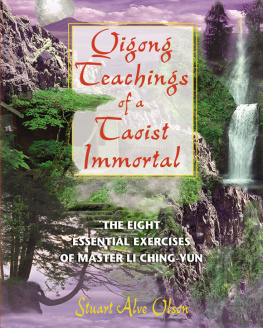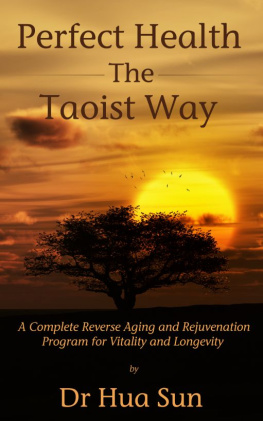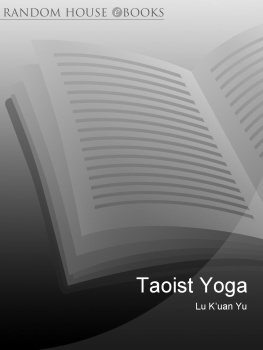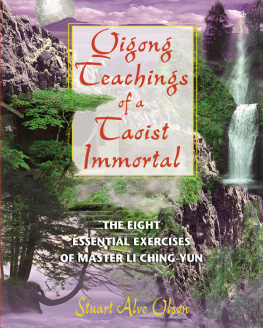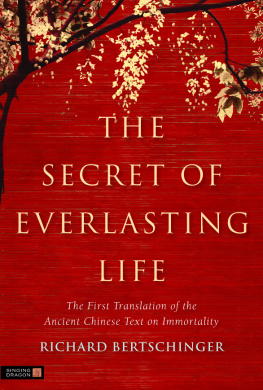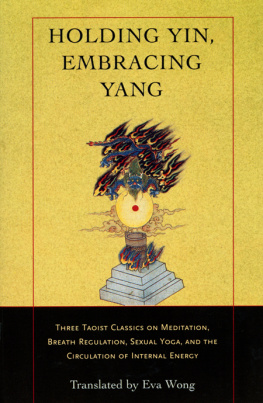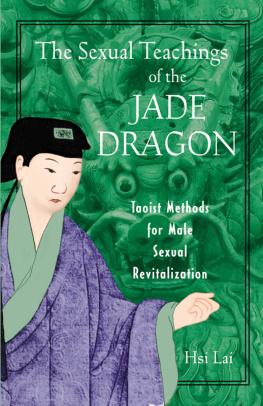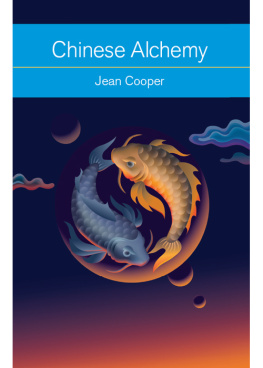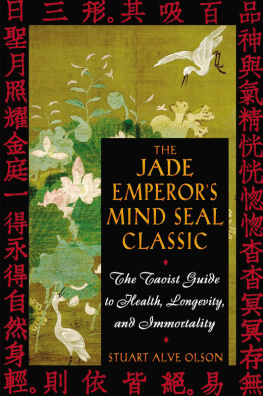Wongs translation is accessible and her scholarship sparkling in this illuminating edition of a Chinese Taoist classic.
Publishers Weekly
ABOUT THE BOOK
To age with the sun and moon and be renewed by spring and summer, to conserve the seeds of growth in autumn and winter and to be nourished by the eternal breath of the Taothese are the goals of the Taoist alchemists, the masters of the arts of health, longevity, and immortality.
This book is a translation of a concise Taoist alchemical manual known as the Dragon-Tiger Classic, along with its two most important commentaries. The classic, written in ancient times by an unknown author and published during the fifteenth century BCE, is regarded by contemporary Taoist practitioners as the most complete guide to spiritual transformation. It covers the three forms of Taoist practice:
- External alchemy, concerned with the ingestion of minerals, herbs, and other substances to attain health, longevity, and immortality
- Sexual alchemy, in which the practitioner uses the energy of a sexual partner to cultivate his or her own energy
- Internal alchemy, the practice of meditation, calisthenics, and yogic postures to cultivate mind and body
An extensive introduction by the translator and the inclusion of two commentaries by traditional Chinese authors aid the reader in understanding this concise, symbolic text.
EVA WONG is an independent scholar and a practitioner of the Taoist arts of the Pre-Celestial Way and Complete Reality lineages. She has written and translated many books on Taoism and related topics, including A Master Course in Feng-Shui; Tales of the Taoist Immortals; and Taoism: An Essential Guide.
Sign up to learn more about our books and receive special offers from Shambhala Publications.

Or visit us online to sign up at shambhala.com/eshambhala.
Harmonizing Yin and Yang
THE DRAGON- TIGER CLASSIC
Translated and with an introduction by Eva Wong

SHAMBHALA
Boston & London
2013
Shambhala Publications, Inc.
Horticultural Hall
300 Massachusetts Avenue
Boston, Massachusetts 02115
www.shambhala.com
1997 by Eva Wong
All rights reserved. No part of this book may be reproduced in any form or by any means, electronic or mechanical, including photocopying, recording, or by any information storage and retrieval system, without permission in writing from the publisher.
Library of Congress Cataloging-in-Publication Data
Lung hu ching. English.
Harmonizing yin and yang: the Dragon-tiger classic /
translated and with an introduction by Eva Wong.1st ed.
p. cm.
eISBN 978-0-8348-2885-8
ISBN 978-1-57062-306-6 (pbk.: alk. paper)
1. TaoismSacred books. 2. AlchemyReligious
aspectsTaoism. 3. Yin-yang. I. Wong, Eva,
1951 . II. Title.
BL1900.L88E52 1997 97-2435
299 .51482dc21 CIP
Contents
Introduction

To age with the sun and moon and be renewed by spring and summer, to conserve the seeds of growth in autumn and winter and to be nourished by the eternal breath of the Taothese are the goals of the Taoist alchemists, the masters of the arts of health, longevity, and immortality.
Taoist alchemy is also concerned with spiritual transformation. This transformation involves changing the body and mind from a mundane state to one that mirrors the timeless and permanent reality of the Tao. Alchemy is said to be the most challenging and dangerous path of Taoist spiritual practices. If the endeavor is successful, the alchemist can attain longevity and immortality in his or her own lifetime. If it fails, illness, mental derangement, and even death can result.
The Chinese arts of health and longevity are the products of centuries of experimentation, research, and development. Those of us who practice the techniques of internal transformation today are grateful to the Taoist alchemists for their efforts in searching for the elixir of immortality. True, the idea of immortality has changed, and now immortality no longer means eternal life on earth. But without the efforts of the early alchemists, herbal and traditional Chinese medicine, chi-kung, Taoist calisthenics, the internal martial arts, and Taoist meditation would not have achieved the kind of sophistication they exhibit today.
This book is a translation of the Dragon-Tiger Classic and its two most important commentaries. The texts are collected in the Tai-hsan (Great Mystery) section of the Taoist canon published during the reign of the emperor Cheng Tung (14361449 CE ) of the Ming dynasty (13681644 CE ).
ABOUT THE DRAGON-TIGER CLASSIC
The Dragon-Tiger Classic is regarded by contemporary practitioners of Taoist alchemy to be the most complete guide to spiritual transformation. It describes the ingredients, the catalysts, the equipment, the nature of the physiological transformations, and, most important, the schedule of the firing process needed to initiate the alchemical interactions. All this information is encoded in a set of mnemonics of 1,293 words, making the Dragon-Tiger Classic one of the most challenging alchemical treatises to understand. That so much information is packed into so few words does not mean that there is little to say about the transformations. Rather, it is characteristic of Taoist alchemical treatises to reveal only partial information, and even then, in symbolic language. Since the basic information was general knowledge among the community of practitioners and instructions for advanced adepts were transmitted orally, Taoist alchemical treatises often leave out the most basic and the most advanced information. This arrangement worked well as long as there was an active community of practitioners. However, as practitioners dwindled, knowledge not written down was lost.
Given the complexity of the alchemical processes described in the Dragon-Tiger Classic and the amount of background information needed to understand the text, I have written a readers guide for it. Unless you are extremely familiar with the theory and practice of Taoist alchemy, I would urge you to read this introduction before you tackle the text and the commentaries. My own understanding of the Dragon-Tiger Classic was helped tremendously by my practice of the Taoist alchemical arts. It has allowed me to reconstruct missing information and unravel the multiple layers of meanings encoded in the text.
The authorship of the Dragon-Tiger Classic is unknown. The version in the Cheng-tung Taoist canon was edited by two Sung dynasty (9601279 CE ) Taoists, Wang Tao and Chou Chen-i, who also added comments in parts of the Secondary Commentary. Wang Tao considered the Dragon-Tiger Classic one of the oldest known texts of Taoist alchemy, possibly written before the Eastern Han dynasty (25220 CE ). However, Chu Hsi, the Sung dynasty neo-Confucianist philosopher, argued that the text was written much later, probably during the Tang dynasty (618906 CE ). At present, there is no agreement about when the Dragon-Tiger Classic was written. The authorship of the Primary Commentary is also unknown, and there is no information about when it was written. All we can say is that it could not have been written earlier than the second century CE because it contains extensive references to the
Next page
